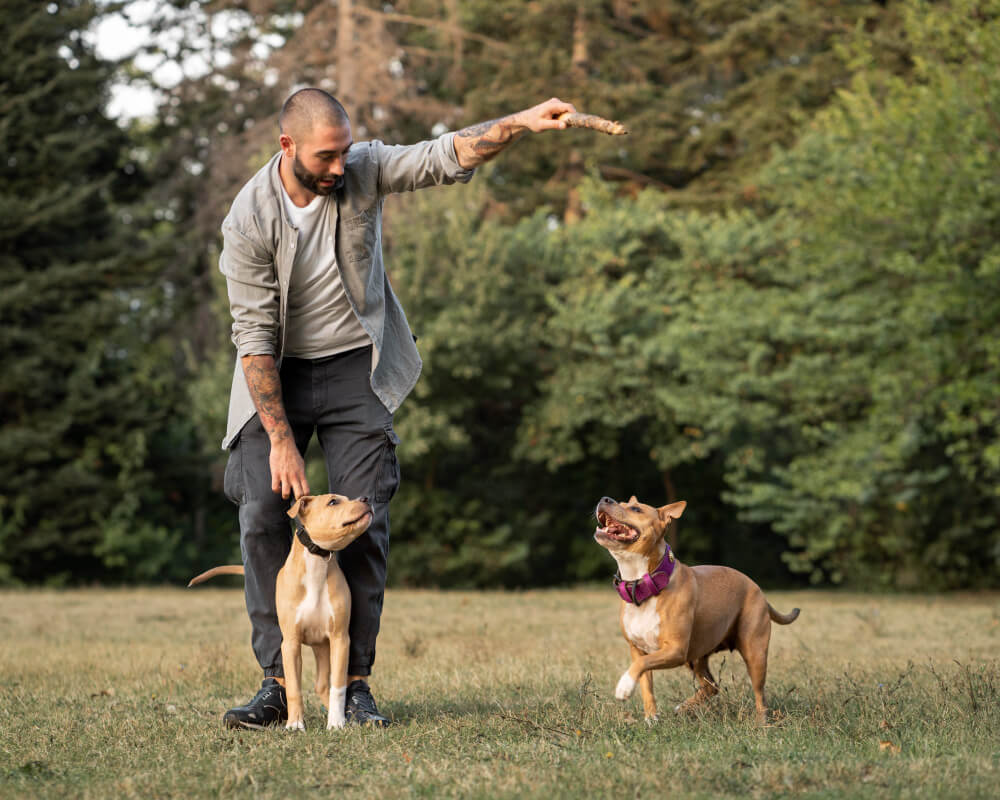Dogs are a part of our households and become family members, which makes communication important. Training your furry friend to understand "speak" and "quiet" instructions strengthens your bond and adds to their well-being and protection.
Imagine the peace of getting a dog that barks on command and silences with a phrase, making your home harmonious. This article will delve deep into how to teach a dog to speak.
Before Everything, Understand Your Dog
Understanding your pet's body language is step one to knowing how to teach your dog to speak. This opens a window into their emotions, helping them respond better during training. Glances at their ears, tail, and posture can indicate if they're happy, scared, or eager to learn. This silent communication is vital for strengthening your bond and making training more effective.
Furthermore, reacting swiftly to your dog's actions with rewards or corrections helps them learn what behaviors are desired. It's about catching those teachable moments when your dog is most attentive. Mastering this timing can make your training sessions more rewarding and successful for both of you.
Training Your Dog to Speak

Training your dog to speak on command isn't only an amusing trick; it's a manner to enhance communication between you and your pet. By coaching them to vocalize on cue, you are giving them a tool to express themselves in a controlled way. Here are 5 key factors on how to train a dog to speak:
1. Find the Right Motivator:
Every dog has something that gets them excited and talkative. It could be a favorite toy, a treat, or the sight of their leash. Use this motivator to your advantage during training sessions.
2. Start with a Trigger:
Begin by finding a natural situation that makes your dog bark. For some, it is the doorbell ringing or seeing a squirrel inside the backyard. Introduce the "speak" command during those times.
3. Introduce the Command:
Say the command "speak" with confidence and clarity as soon as your dog starts to bark at the trigger. Immediately follow their bark with praise — a treat, reward, or playtime.
4. Practice and Patience:
Repetition is fundamental. Practice the "speak" command in short, however frequent training periods. Patience is also important; some dogs may additionally take longer to make the connection than others.
5. Add inside the 'Quiet' Command:
Once your dog has mastered "communicate," you may begin to educate them on "quiet" commands by rewarding them after they stop barking at commands. This creates balance in their vocal training.
Training Your Dog to Be Quiet

It's just as important to train your dog to be silent as it is to teach them to speak. It's all about giving them the tools to apprehend when it's appropriate to bark and when to be silent. Here are five steps to guide you through schooling your dog to be quiet:
1. Catch Them within the Act:
Wait for a second when your dog starts barking to introduce the "quiet" command. This might be throughout playtime or once they hear a noise.
2. Introduce the 'Quiet' Command:
As your dog barks say "quiet" in a calm, firm tone. You would possibly want to copy it a few instances to start with to trap their attention.
3. Reward Silence Immediately:
Immediately, your dog stops barking, even for a second, praise them with a treat or their favorite toy. This helps them associate stopping barking with a positive outcome.
4. Increase Quiet Time Gradually:
Start by rewarding them for being quiet for a few seconds before extending the time gradually. This teaches them to remain silent for longer periods.
5. Be Consistent and Patient:
While training, use the "quiet" command every time your dog barks unnecessarily, and always reward their silence. Patience will be your pleasant friend for the duration of this training. Some dogs may also take longer to analyze than others.
Practice Makes Perfect

Training your dog requires both repetition and patience. For that, short, everyday sessions assist in reinforcing commands, turning them into habits for your furry friend. It's about improvement, no longer perfection, and celebrating the small victories along the way.
Here, consistency is key—regular practice improves communication abilities and also strengthens the bond between you and your dog. With time and endurance, you'll see the fruits of your labor, proving that practice makes perfect. Patience should be your friend if you want to teach a dog to speak. This is because some dogs may additionally take longer to learn than others.
Conclusion
Mastering how to make your dog speak is essential for effective communication. This ensures harmony at your home. It's a starting point for a worthwhile journey of learning together. Keep exploring new commands and maintain a regular, fun method of training.
This ongoing procedure not only strengthens your bond but also enhances your dog's well-being and behavior. Keep up the good work, and experience the possibilities that come with training your dog.

